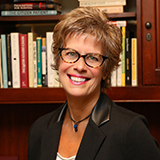 Harriet Washington, a medical ethicist and author, opened a recent talk saying, “Alexander Hamilton and John Jay, heroes of the newly minted American Republic, did not spend 15 April 1788, penning the Federalist papers, nor were they holding forth on the virtues of a free press while bedecked in morning coats and powdered wigs. Instead they crouched, bleeding profusely, behind members of the state militia on the outskirts of New York City. Bodies lay scattered and blood pooled in the street as hordes of shrieking, outraged New Yorkers fled the militia’s bullets in a chaos of fear. Many of the fleeing were badly wounded, but the city’s doctors couldn’t help them: Nearly all were in jail.”
Harriet Washington, a medical ethicist and author, opened a recent talk saying, “Alexander Hamilton and John Jay, heroes of the newly minted American Republic, did not spend 15 April 1788, penning the Federalist papers, nor were they holding forth on the virtues of a free press while bedecked in morning coats and powdered wigs. Instead they crouched, bleeding profusely, behind members of the state militia on the outskirts of New York City. Bodies lay scattered and blood pooled in the street as hordes of shrieking, outraged New Yorkers fled the militia’s bullets in a chaos of fear. Many of the fleeing were badly wounded, but the city’s doctors couldn’t help them: Nearly all were in jail.”
Washington’s talk at the New York Academy of Medicine on 9 March, entitled, Race, Jailed Doctors, and Heroes of the American Republic focused on the 1788 New York Doctors’ Riot, which was actually a riot against doctors when hordes of enraged citizens went house to house, tearing up homes in search of doctors they would attack.
The doctors were in jail for their own protection.
Washington, author of Medical Apartheid: The Dark History of Medical Experimentation on Black Americans from Colonial Times to the Present, explained the events leading up to the riot. At the time, Columbia College, the city’s only medical school, obtained cadavers for research and for medical students to learn anatomy by robbing the graves of African Americans. The practice was illegal but authorities did nothing to stop it even after freedmen petitioned the Common Council. The freedman wrote that nightly gatherings of loud, swaggering, drunken “students of Physic…under cover of Night and in the most wanton of sallies, [dug up black bodies to] “mangle their flesh out of a wanton curiosity and then expose it to the Beasts and Birds.”
The dissection of humans, said Washington, “ran counter to strong nineteenth century sentiments regarding the sanctity of the body that were shared by blacks and whites…[which] many believed…could prevent resurrection.”
But it was when medical students began digging up white bodies that New Yorkers rioted. Accounts of what triggered the rioting vary, but in one version, children playing outside a window of New York Hospital annoyed Dr. John Hicks, who brandished an arm he was dissecting at a small boy saying, ‘It’s your mother’s arm! I just dissected it.” The boy ran home to tell his father, who gathered friends and the hunt for doctors was on – especially for Dr Hicks.
The mob swelled to some 5,000 black and white New Yorkers who denounced doctors as “butchers.” When it looked like the rioters might breach the jail and reach the terrified doctors inside, Governor George Clinton called out the militia, which was unable to stop the crowd from stoning Alexander Hamilton and future Supreme Court Justice, John Jay. The militia opened fire and the mob finally dispersed after an estimated 6 to 20 people were killed.
The cadavers were also used as part of medical research, and the riots represented anger at doctors for their arrogance and abuses of individuals dead or alive without permission or informed consent in the name of advancing medicine. The riots led to some changes; the next year, New York passed a law against grave robbing and over the following decades states enacted various laws allowing the use of some bodies in dissection.
But ongoing abuses persist today, said Washington, who has previously written about unethical medical research, including a study conducted by the drug giant Pfizer during a deadly epidemic of meningitis in Nigeria. In 2011, Pfizer paid $75 million for failure to inform parents of children in the study that half of the children were given an experimental drug and the other half were given a comparator antibiotic at one-third the recommended dose, an apparent marketing ploy to tilt the study in favor of Pfizer’s antibiotic, trovafloxacin (Trovan) which was given at full dose. Pfizer defended the lower dose saying the shots were “too painful” for the children at full dose.
Jeanne Lenzer is a medical investigative journalist who sadly has to leave fascinating tidbits about various stories on the cutting room floor. The Backstory is an attempt to archive some of those bits and to provide a bit of insight for the public about the “behind-the-scenes” aspect of investigative journalism.
Competing interests: None declared.
